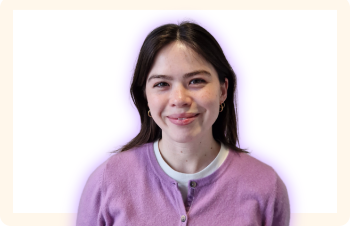Diversity and representation in publishing is something that has long been a topic of conversation. More recently, the representation in children’s books has been reflected on in the media. Creative Access caught up with author and founder, Jasmine Richards, who specialises in children’s publishing, to find out what more can be done to address the issue, as well as discussing Jasmine’s own projects…
Q: What is your current role / tell us a little more about Storymix?
I am an author and the founder of STORYMIX, which is a children’s fiction studio that focuses on inclusive representation and fabulous storytelling. We create young fiction series for publishers and work with authors and illustrators from BME backgrounds to create those books. It is one of the key ambitions of STORYMIX that our writers and illustrators will also go on to secure their own publishing deals and thus meaningfully change the makeup of the publishing landscape.

Q:What is a fiction studio, and how did you get into it?
So you might have heard of book packagers – companies that essentially put together books for publishers by pairing up the right talent with the right ideas. This is essentially what STORYMIX does, but I am not a fan of the word packager. It sounds too manufactured to my ear, when a lot of love and care goes into what is actually created. I really like ‘book incubator’ as a phrase. As the founder of Storymix I come up with a commercial and high-concept idea and then find a writer and/or an illustrator to bring the project to life. Packagers do a lot of younger fiction, so in that 5-7 or 7-9 space, but will also do middle grade and YA (Young Adult fiction).
As the founder of Storymix I come up with a commercial and high-concept idea and then find a writer and/or an illustrator to bring the project to life.
I come from an IP (intellectual property) development background and my formative editorial years were at a packager called Working Partners, who developed Beast Quest and Rainbow Magic. I learned so much about the craft of editing and story structure there. I also worked for OUP Children’s and ran the in-house development team which was called the Creative Kitchen. For me, the packaging seems like an obvious strategy to bringing more and better representation into children’s books.
Q: Tell us your perceptions of the children’s publishing industry when it comes to diversity of representation in the books themselves?
I would love to see a move away from ‘issues’ books. They are important, but they are only one part of the story. Young people from all backgrounds have the right to see themselves in all kinds of stories!
Mystery stories, horror stories, sci-fi stories, and funny stories.
I think children’s publishing needs to feature books that reflect all parts of our society. A diversity of setting and characters are the fuel needed for really engaging storytelling. I’d love to see more stories in translation or really unusual re-imaginings of traditional tales from around the world.
Ultimately, it’s not just about doing the right thing in celebrating all children – it’s about doing the right thing for storytelling, giving readers the richest possible tapestry of characters, experiences, and places. It’s about encouraging curiosity about the world and the people that live in it.
Q: Do you think that is shifting?
I think children’s publishing has shifted in recent years and there’s been some brilliant, inclusive books that aren’t issues-based, but there’s still a long way to go. I want to see more fun, representative children’s stories at the younger age range, so for 5-7 or 7-9-year-olds, as there really seems to be an aching lack of representation there. We need to focus on giving all children the spotlight from the start, so that they can all see themselves and not feel excluded from reading.
We need to focus on giving all children the spotlight from the start, so that they can all see themselves and not feel excluded from reading.
Q: What more needs to be done?
Change needs to start with publishing itself – the staff, at all levels, need to be more representative of the society we live in. I hope Storymix might become an incubator of editorial talent from BME backgrounds as well as writers from these backgrounds as the business evolves and grows. I signed the open letter to the industry as part of the Black Writer’s Guild, where we outlined how publishing needs to give all backgrounds and viewpoints a seat at the table. As we’ve seen from the PRH ethnicity pay gap report, staffing within publishing still has a long way to go to be fully equal, but even the existence of an ethnicity pay gap report is a start.
You can view Jasmine’s STORYMIX website here.
You can also follow Jasmine on Twitter: @storymixstudio or @jrichardsauthor




